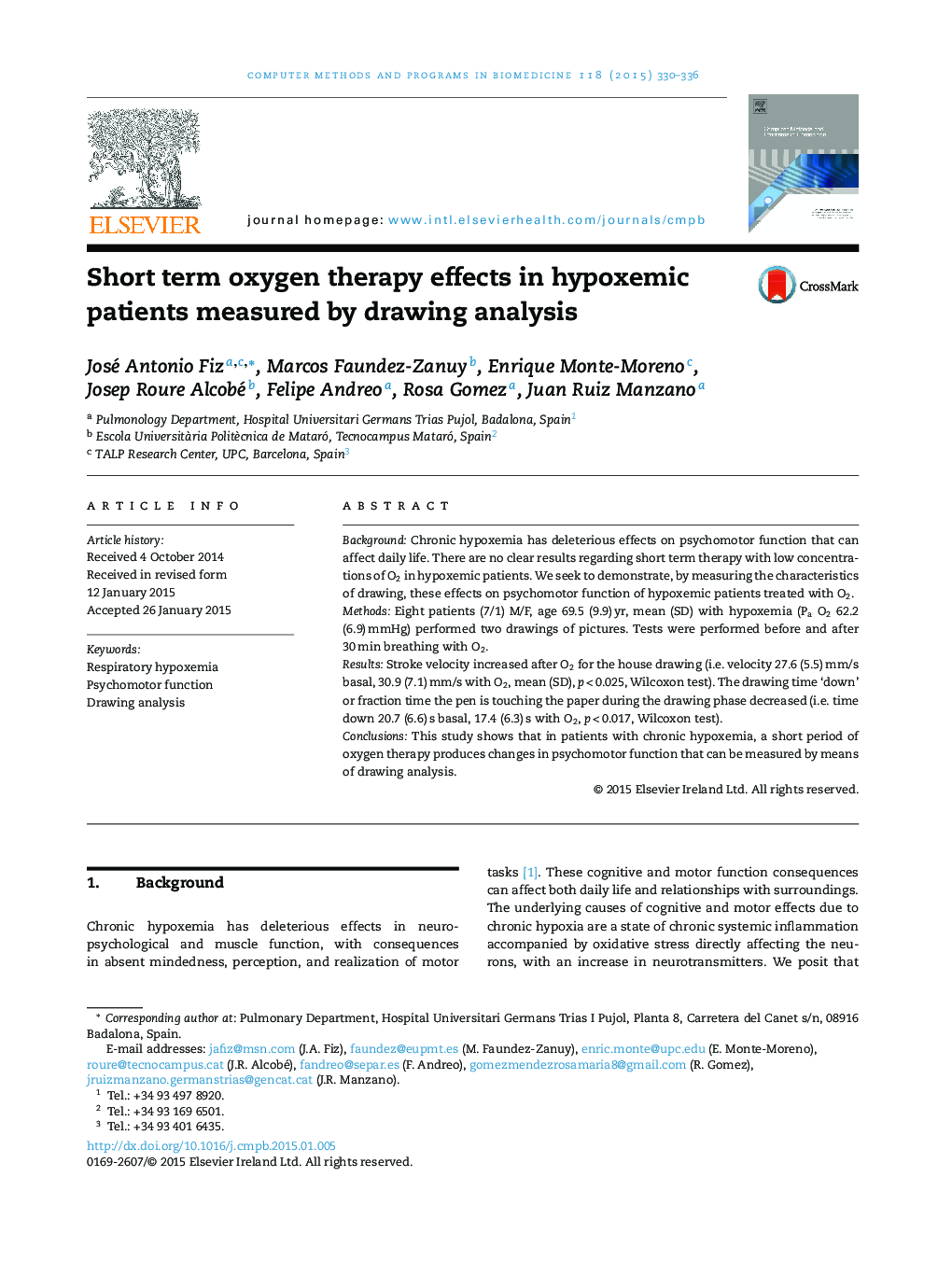| Article ID | Journal | Published Year | Pages | File Type |
|---|---|---|---|---|
| 467643 | Computer Methods and Programs in Biomedicine | 2015 | 7 Pages |
•First paper devoted to analyze oxygen therapy effects measured by handwritten tasks.•This study shows that in patients with chronic hypoxemia, a short period of oxygen therapy produces changes in psychomotor function.•We show that this changes can be measured by means of drawing analysis.
BackgroundChronic hypoxemia has deleterious effects on psychomotor function that can affect daily life. There are no clear results regarding short term therapy with low concentrations of O2 in hypoxemic patients. We seek to demonstrate, by measuring the characteristics of drawing, these effects on psychomotor function of hypoxemic patients treated with O2.MethodsEight patients (7/1) M/F, age 69.5 (9.9) yr, mean (SD) with hypoxemia (Pa O2 62.2 (6.9) mmHg) performed two drawings of pictures. Tests were performed before and after 30 min breathing with O2.ResultsStroke velocity increased after O2 for the house drawing (i.e. velocity 27.6 (5.5) mm/s basal, 30.9 (7.1) mm/s with O2, mean (SD), p < 0.025, Wilcoxon test). The drawing time ‘down’ or fraction time the pen is touching the paper during the drawing phase decreased (i.e. time down 20.7 (6.6) s basal, 17.4 (6.3) s with O2, p < 0.017, Wilcoxon test).ConclusionsThis study shows that in patients with chronic hypoxemia, a short period of oxygen therapy produces changes in psychomotor function that can be measured by means of drawing analysis.
